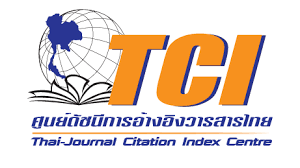TRANSMISSION OF NOSOCOMIAL INFECTIONS VIA THE ULTRASOUND PROBE AND GEL- in vivo and in vitro study.
Abstract
Transmission of diseases may occur via the ultrasound probes as they are used to scan a large number of patients every day. This may especially be a problem with those patients who are immunocompromised and those with breaks in the skin. This study was to try and ascertain if the ultrasound probe and coupling agent can act as a vector in the transmission of nosocomial infection for patients with no break in the skin and to determine a cheap,efficient and cost-effective way of preventing transmission. The ultrasound probes were cleaned before every session and between patients with paper towel. At the end of the session the ultrasound probes from two ultrasound machines i.e. three probes were swabbed and then transferred to the Medical Microbiology Department where they were plated and cultured. The probes were inoculated with an ultrasound gel (Aquasonic, NJ) contaminated with Staphylococcus aureus and then cleaned with a dry paper towel, wet paper towel and chlorhexidine solution. The probes were swabbed and cultured. In addition plates of agar were inoculated with a confluent growth of Staphlococcus aureus and then half the plate was covered by the ultrasound gel to see if there was any inhibition of the growth. A total of 12 specimens out of 51 showed growth of Staphylococcus epidermidis.. Cleaning the probe with alcohol did not reveal any growth of Staphylococcus aureus as was the case with the chlorhexidine. The dry paper towel was not very good with 6 of the 7 swabs showing moderate growth and only 1 with minimal growth. The wet paper towel fared better 4 of the 8 swabs showing no growth and 3 showing minimal growth. The ultrasound gel did not inhibit the growth of the Staphylococcus aureus. Unlike other studies there seems to be high rate of transmission with the ultrasound probe and gel and chlorhexidine and alcohol were found to be effective cleaning agents.
Downloads
Metrics
References
Steinberg PJ, deHoop D. The stethoscope as a vehicle of pathogenic microorganisms in the hospital. Neth Tijdschr
Spach DH, Silverstein FE, Stamm WE. Transmission of infection by gastrointes- tinal endoscopy and bronchoscopy. Ann. Intern Med 1993;118:117-128. Spencer P &
Spencer C. Ultrasound scanning of post-operative wounds- the rsiks of cross-infection. Clinical Radio- logy 1988;39:245-246.
Bucknall TE. Factors influencing wound complication. Annals of Royal College of Surgeons 1983;65:71-77
Mandell GL, Douglas RG & Bennett JE (eds) Principles and Practice of infectious diseases, Ed 2. Wiley Medical 1985
Muradali D, Gold WL, Philips A & Wilson S. Can Ultrasound Probes and Coupling Gel Be A Source of Nosocomial Infection in Patients Undergoing Sono- graphy? An In Vivo and In Vitro Study. AJR 1995;164:1521-1524
Talbot GH & Skros. 70% alcohol disin- fection of transducer heads: experimental trials. Infection Control 1977;6:237-239.
Downloads
Published
How to Cite
Issue
Section
License
Copyright (c) 2023 The ASEAN Journal of Radiology

This work is licensed under a Creative Commons Attribution-NonCommercial-NoDerivatives 4.0 International License.
Disclosure Forms and Copyright Agreements
All authors listed on the manuscript must complete both the electronic copyright agreement. (in the case of acceptance)













